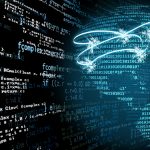Webinar: Earth Observation Data and Smart Analytic with Python: Tom Jones (Satellite Applications Catapult, Harwell, UK) – Thu. 22 June 2017, 16:00 CET.
During this year’s summer school in Matera 2017 Tom Jones will give us a very interesting insight into emerging Deep Learning technology applied to Earth Observation Satellite Data processing.
Tom is an Earth Observation (EO) Specialist within the Applied Digital Intelligence team at the Satellite Applications Catapult. He holds an MSc in Remote Sensing and Geographical Information Systems from Aberystwyth University and has previous experience within commercial remote sensing organisations including NM Group Ltd and Environment Systems Ltd.
Within his MSc Tom undertook innovative research within the field of EO and smart analytics, in particular the exploration of uses for machine learning in automating change detection and classification.
Since joining the Catapult 19 months ago, Tom’s activities have included leading technical innovation centred around developing sustainable and scalable open source tools for enabling routine exploitation of EO datasets, for example applications of machine learning and SAR technologies for agricultural applications, and providing technical expertise into myriad other application areas, projects and stakeholder engagements.
In his webinar presentation, Tom shall introduce a variety of commercial and open source satellite Earth observation datasets and give a short demonstration of an end-to-end process exploiting these using open source machine learning techniques to generate land cover classification maps.
Key things covered in presentation:
- Introduction to Earth observation & state of the art commercial satellite imagery
- Highlighting key components for generating a satellite
- Derived land cover classification
Demo :
– Libraries: ARCSI, RSGISLib, sk-learn, numpy etc.
– Key processes: atmospheric correction, segmentation, machine learning classification, accuracy assessment
– Potential bonus: classification using a deep learning technique

